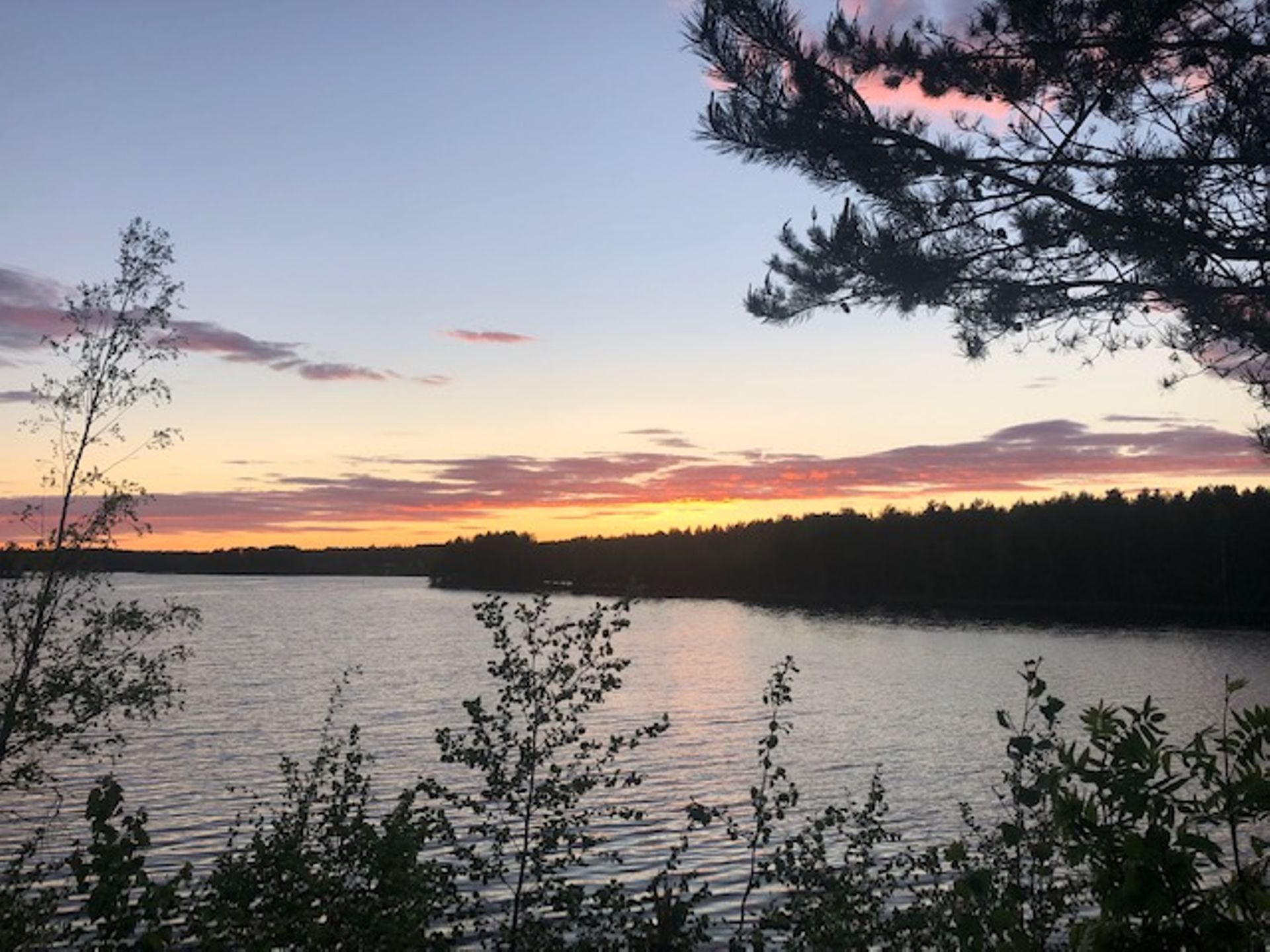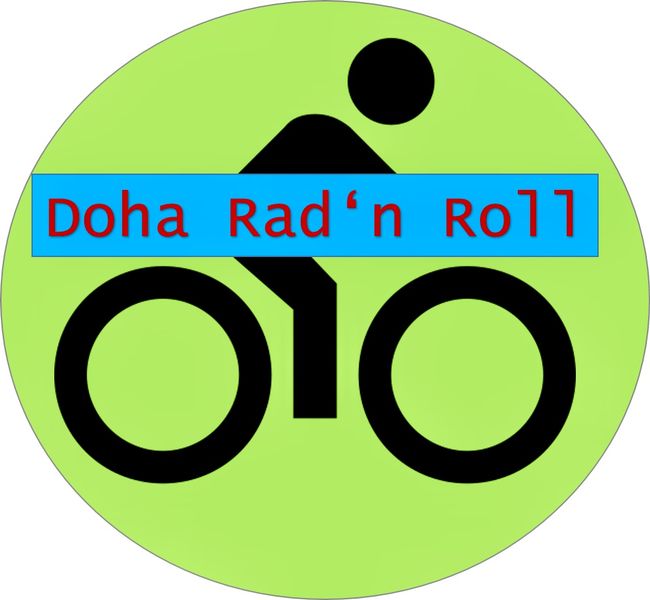Andalusia and Extremadura
Հրատարակվել է: 20.05.2024
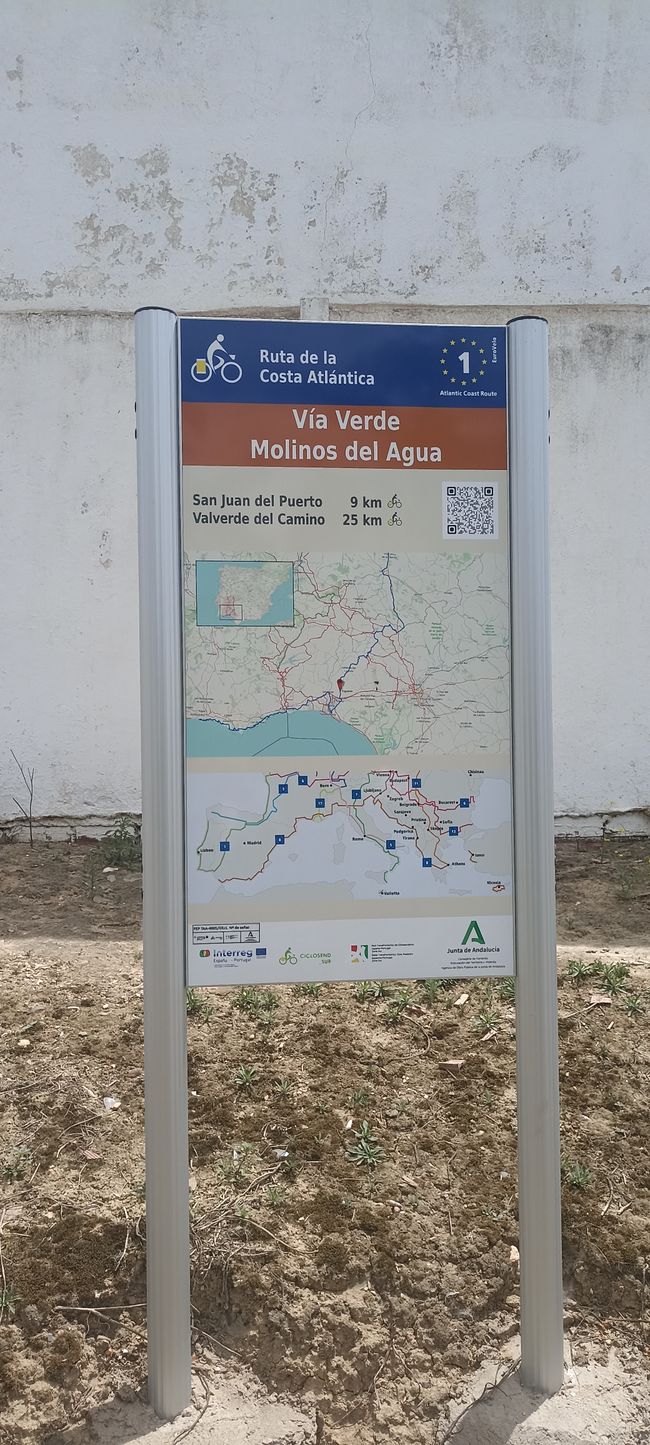
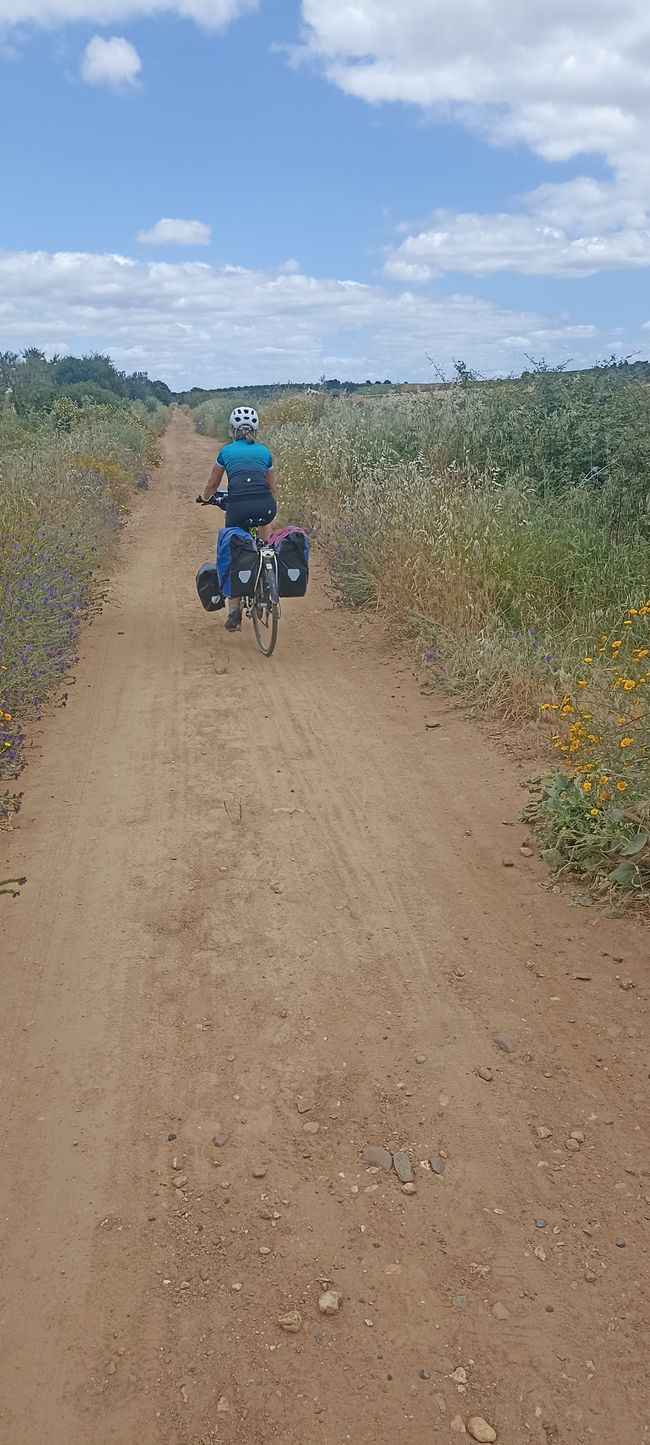

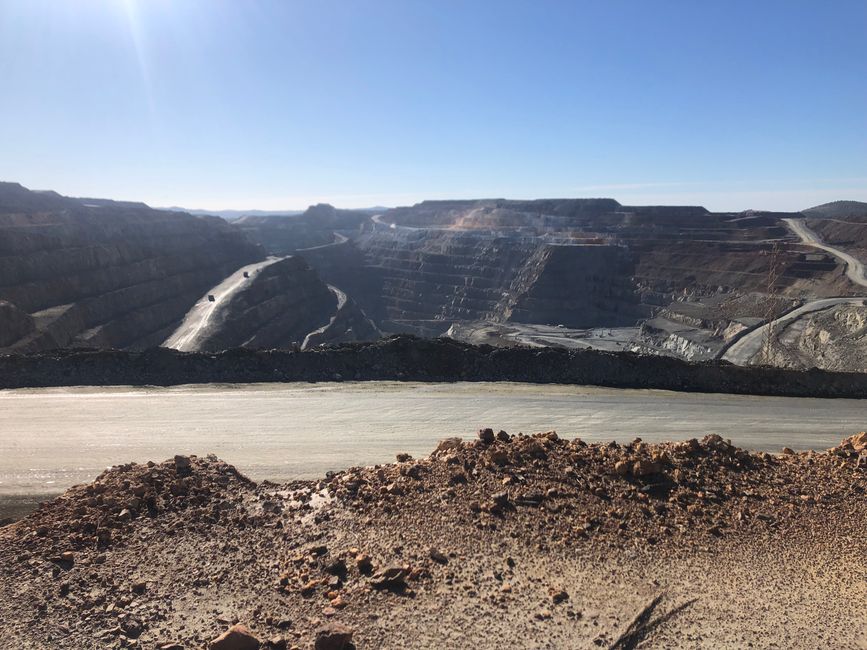

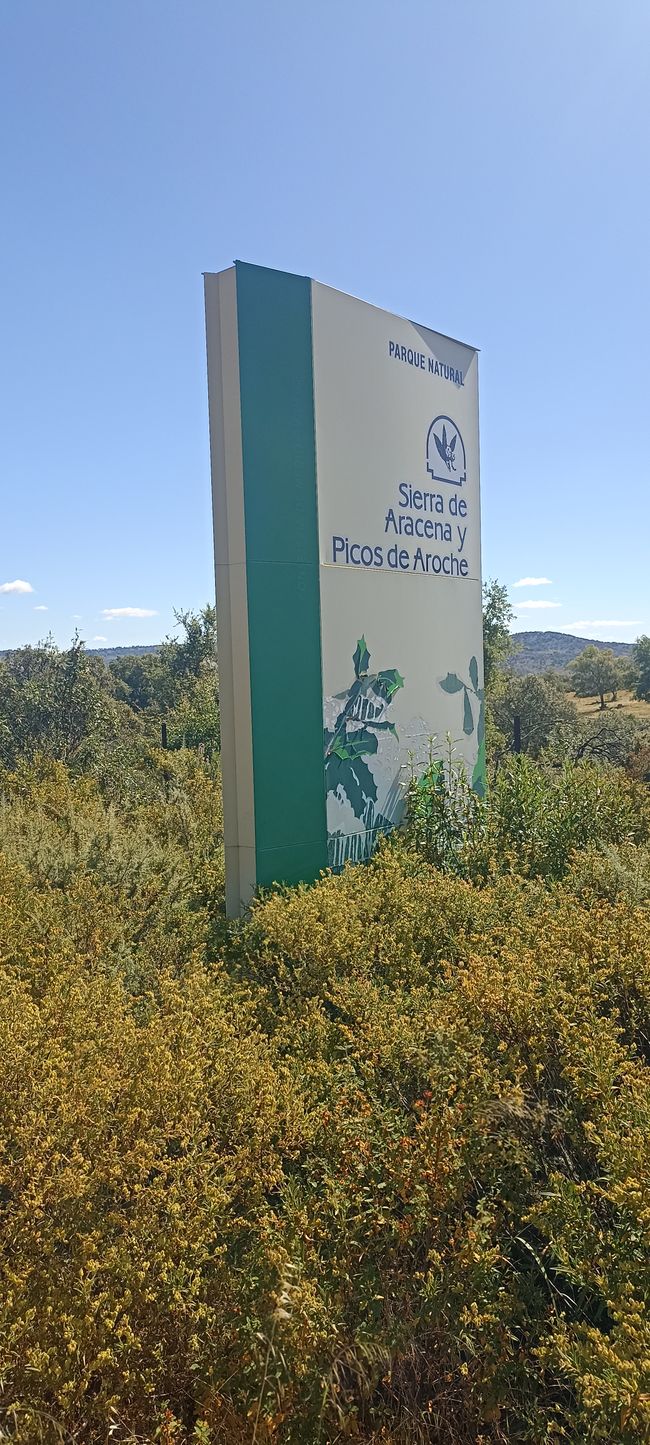


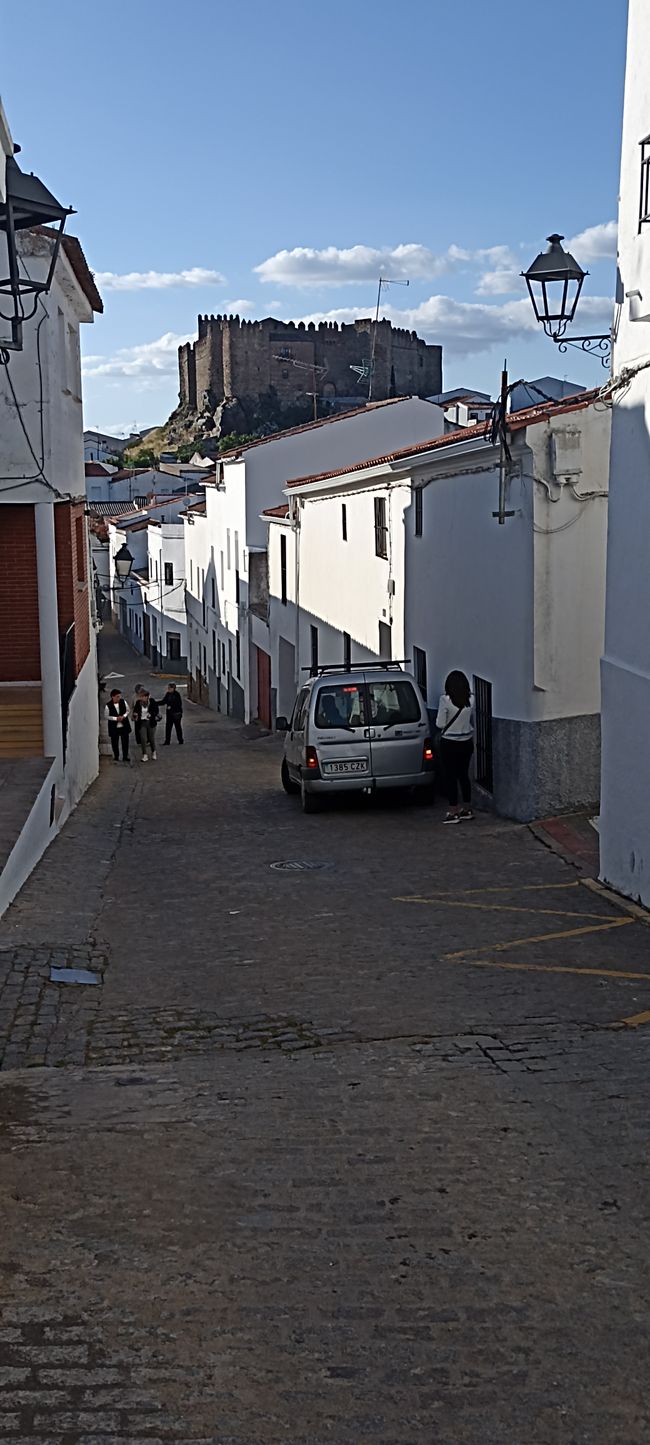
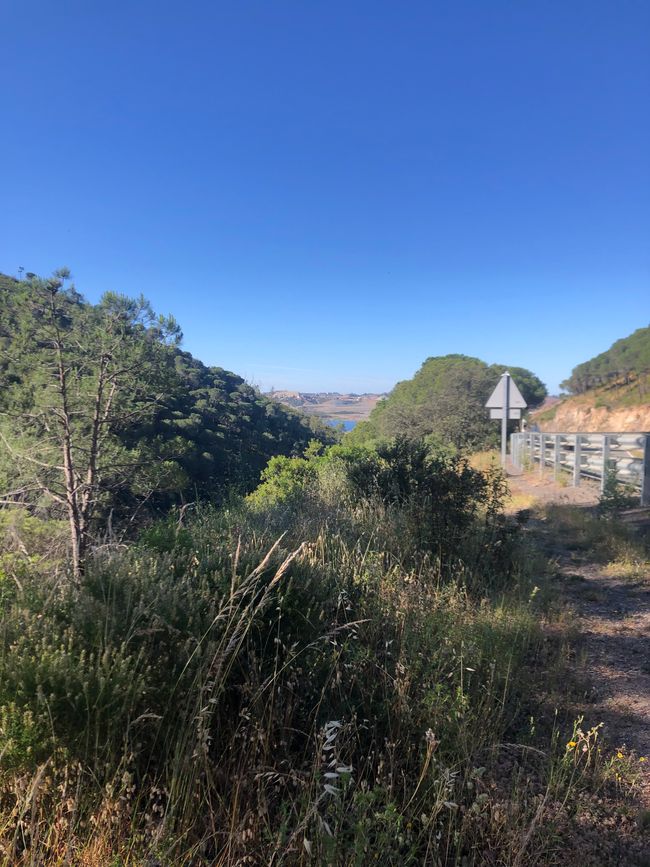

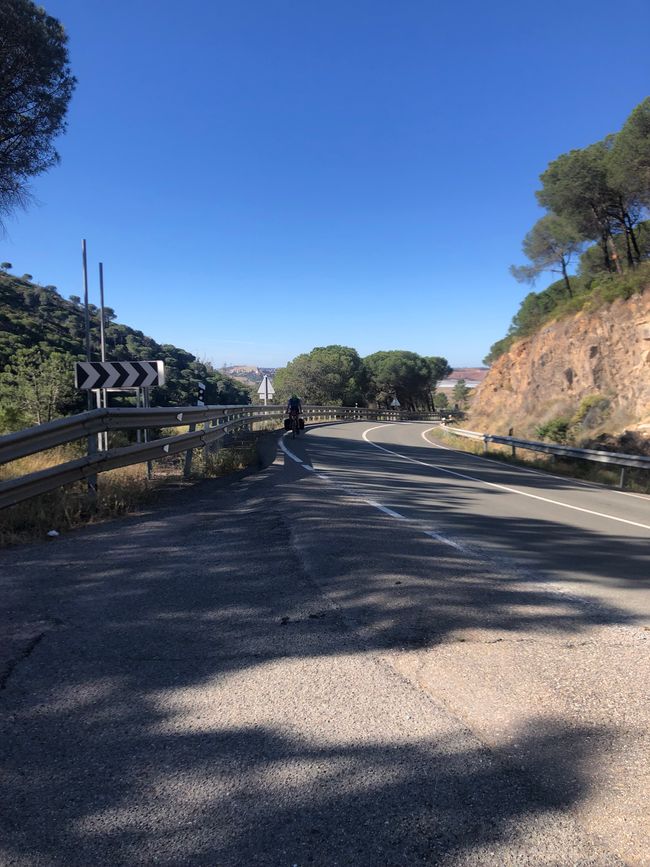

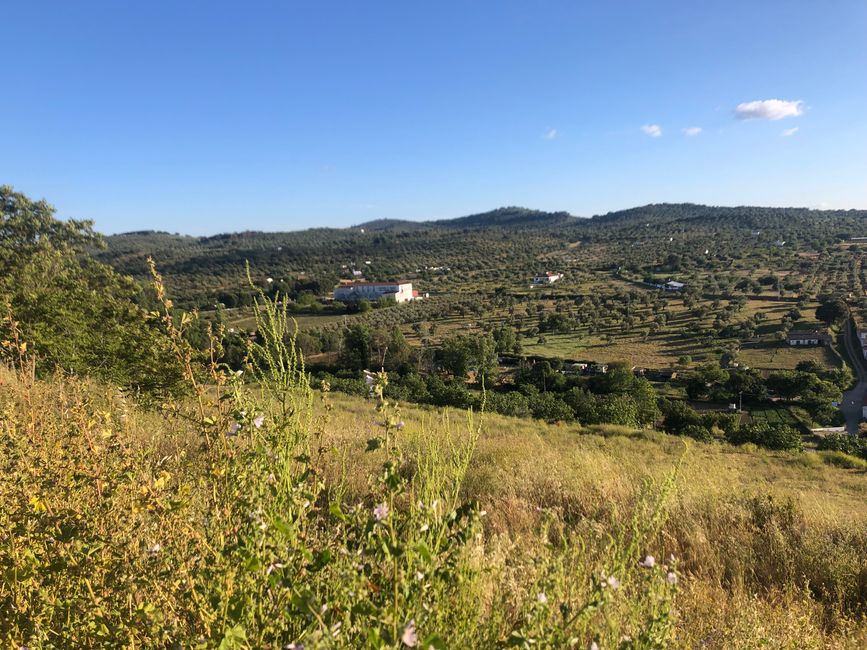
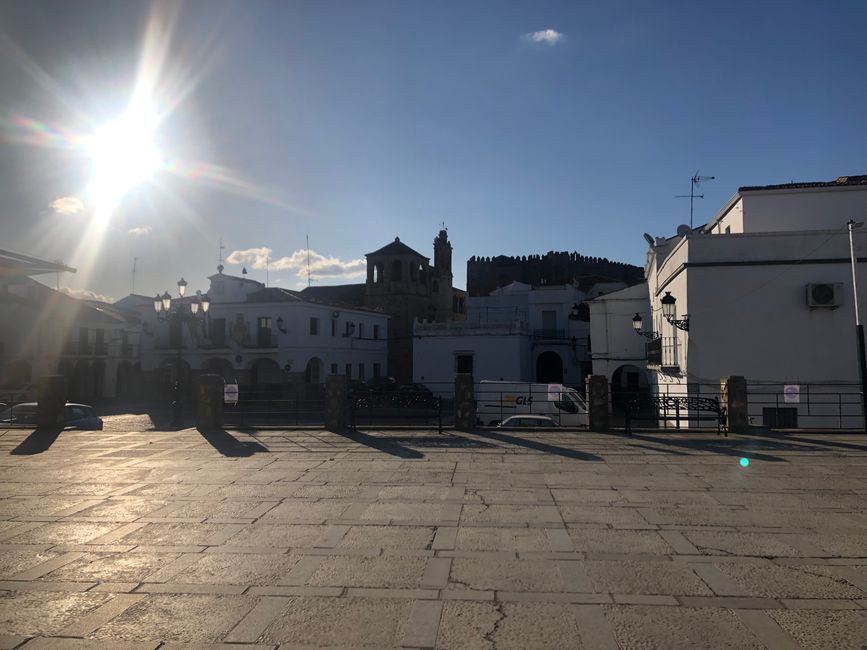
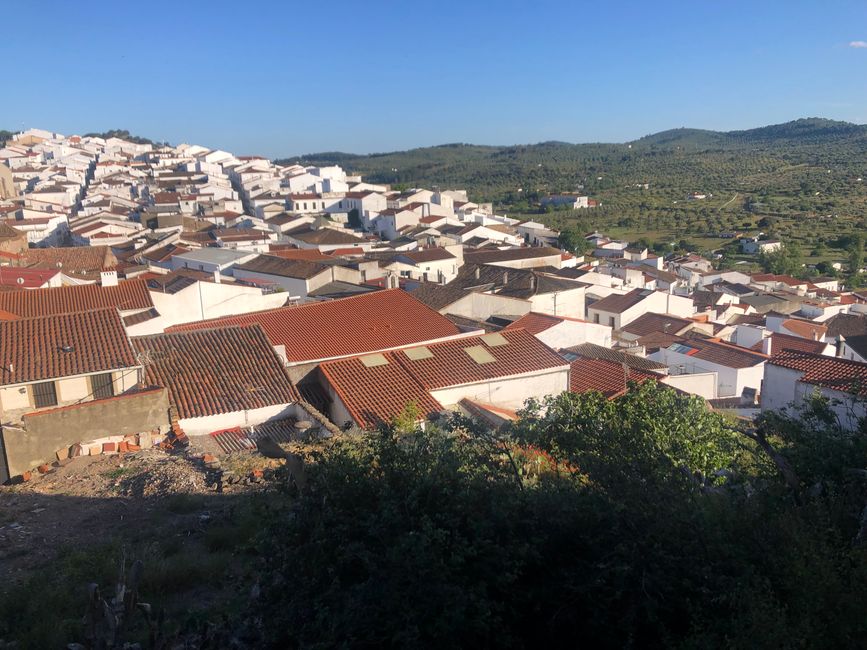
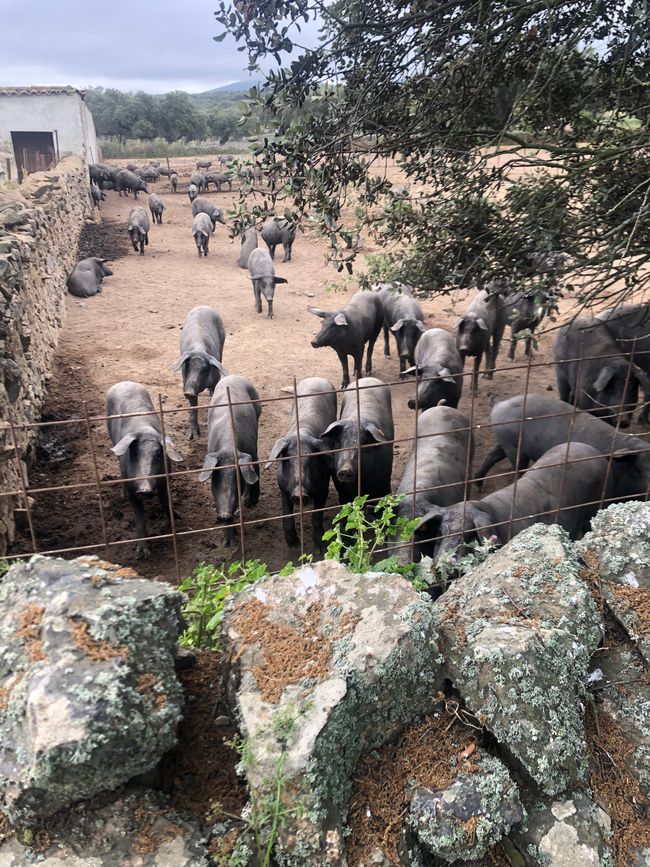
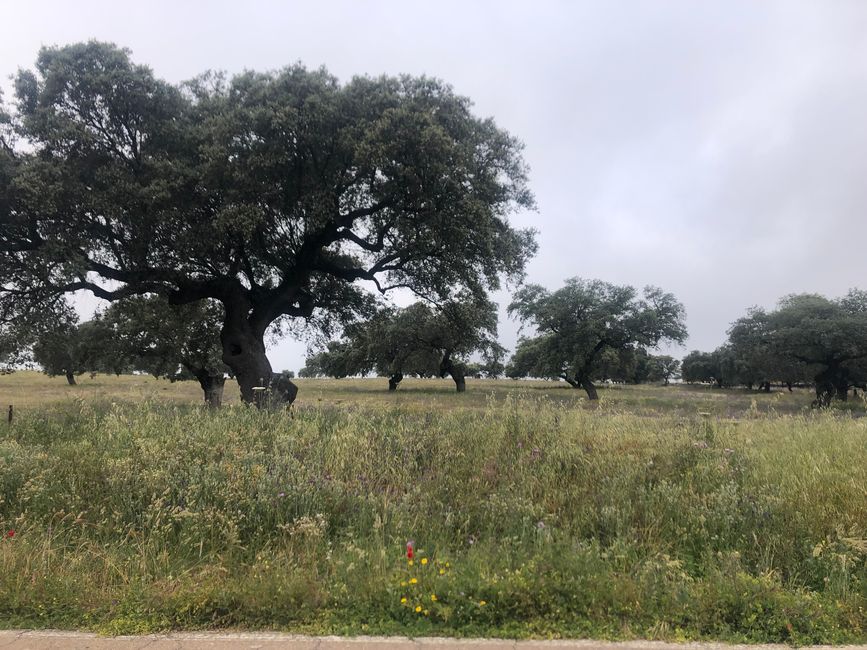

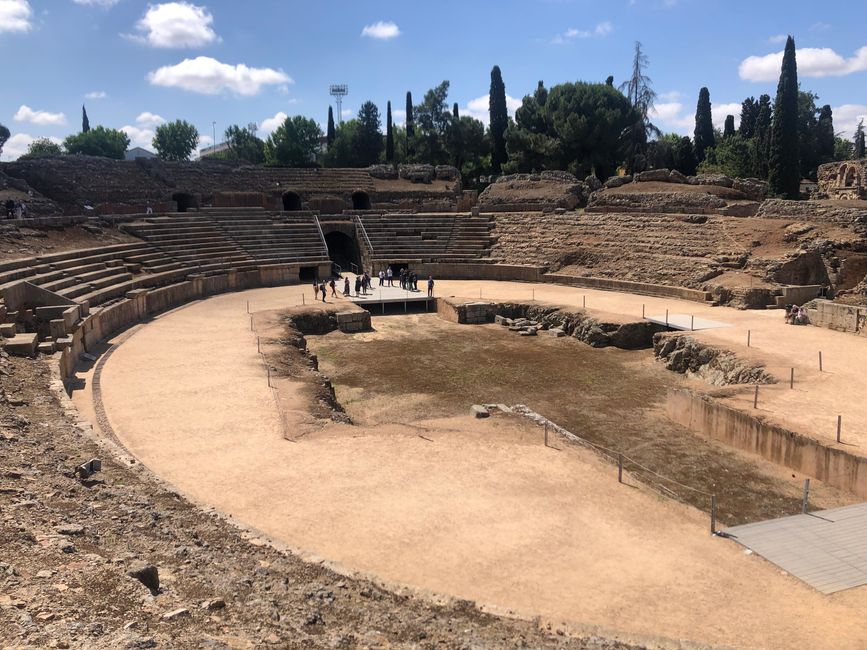
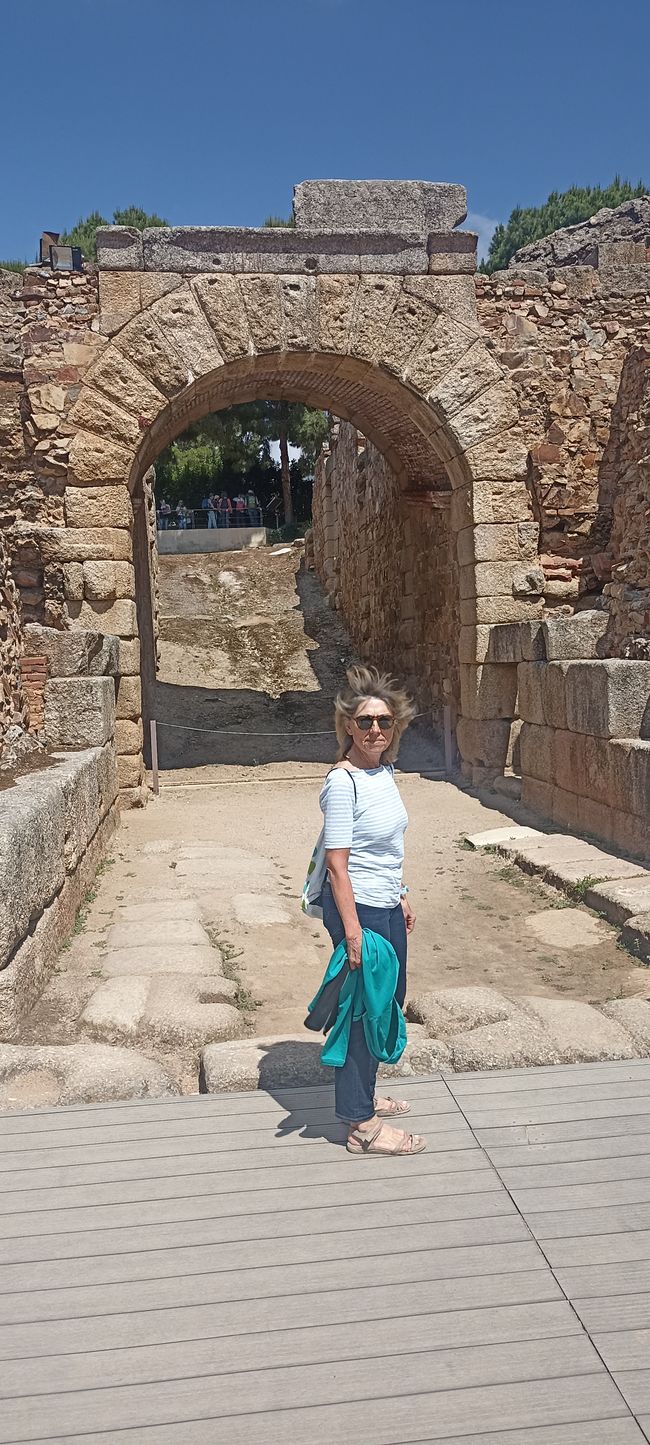
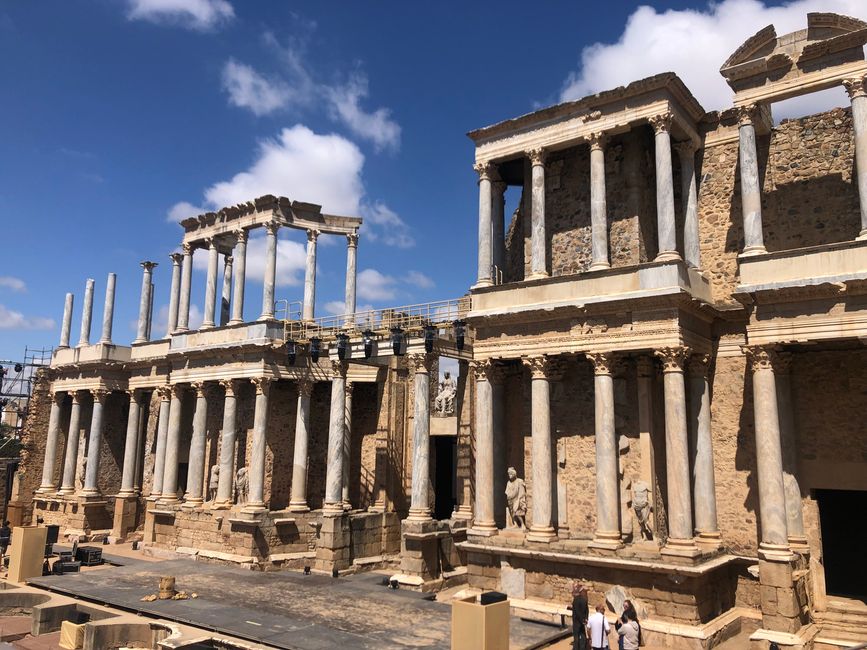


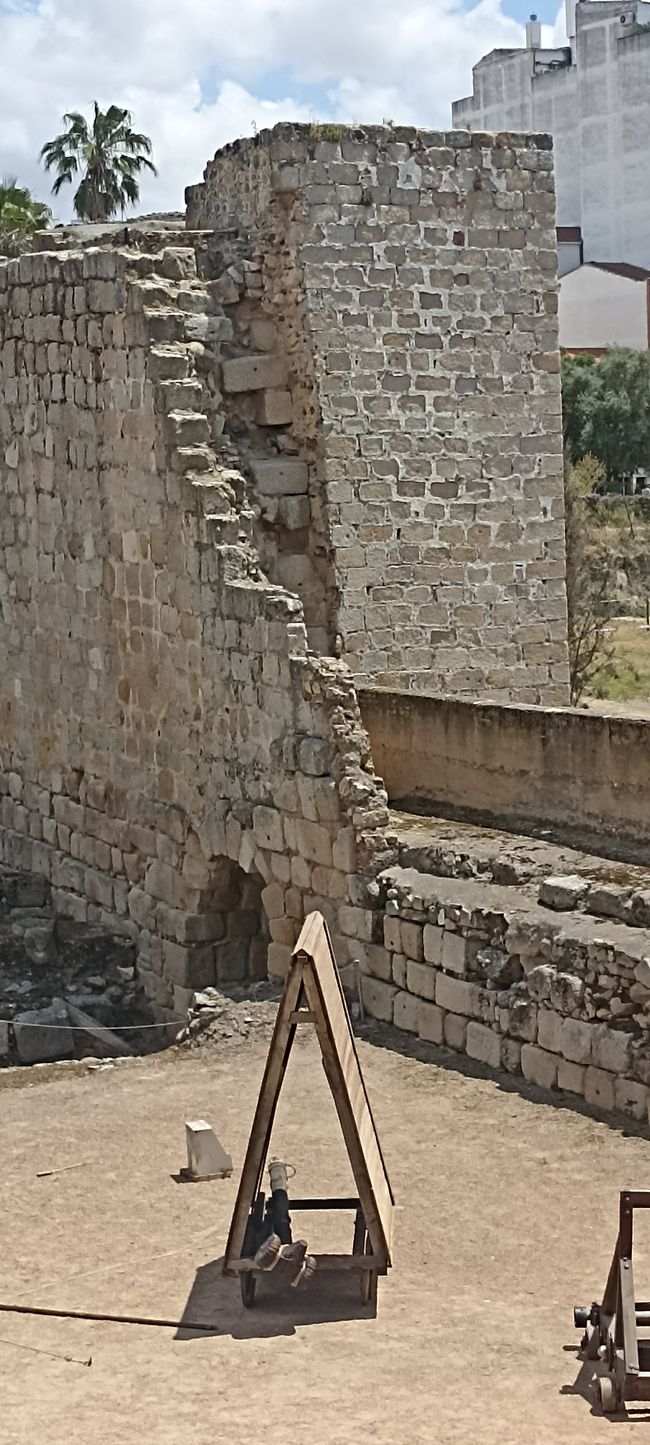
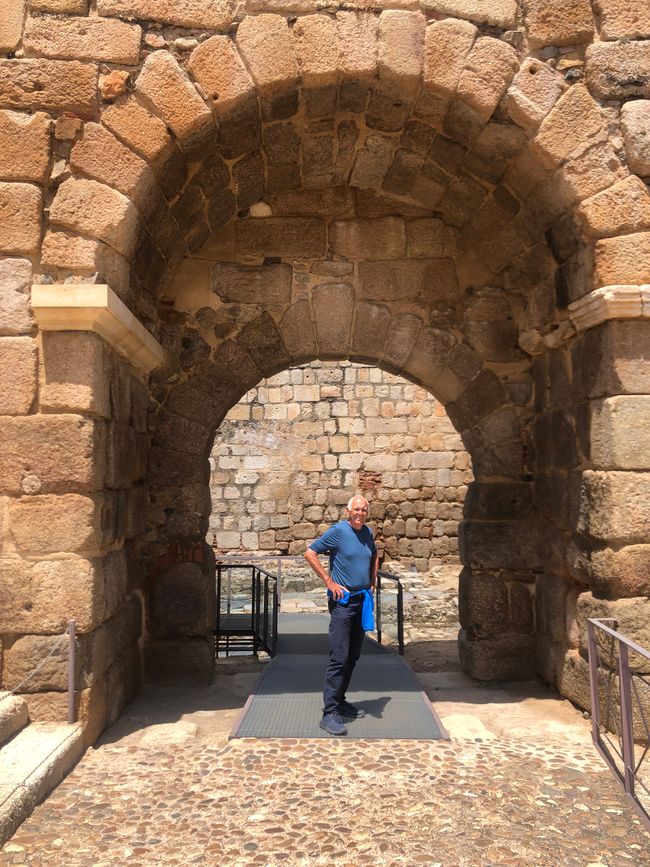
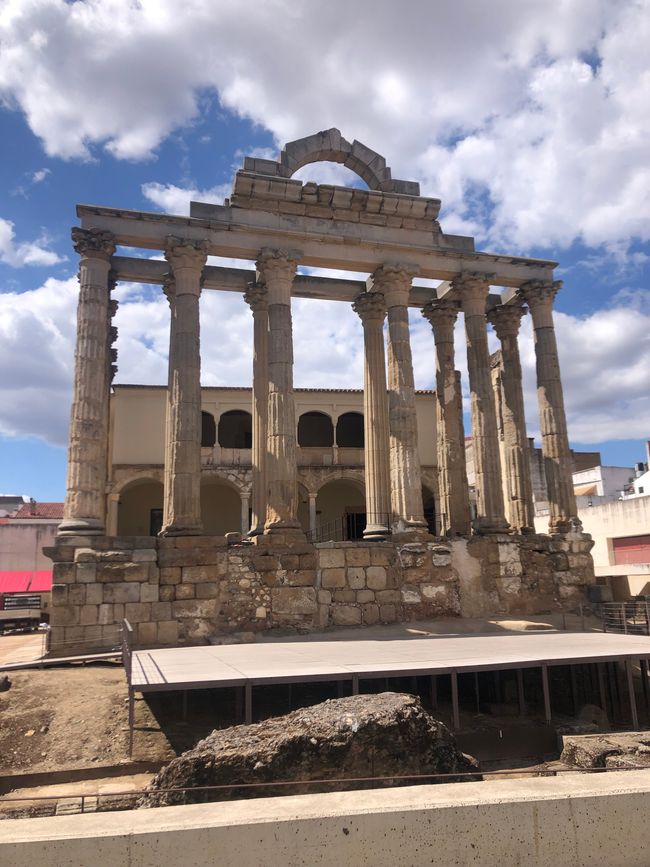
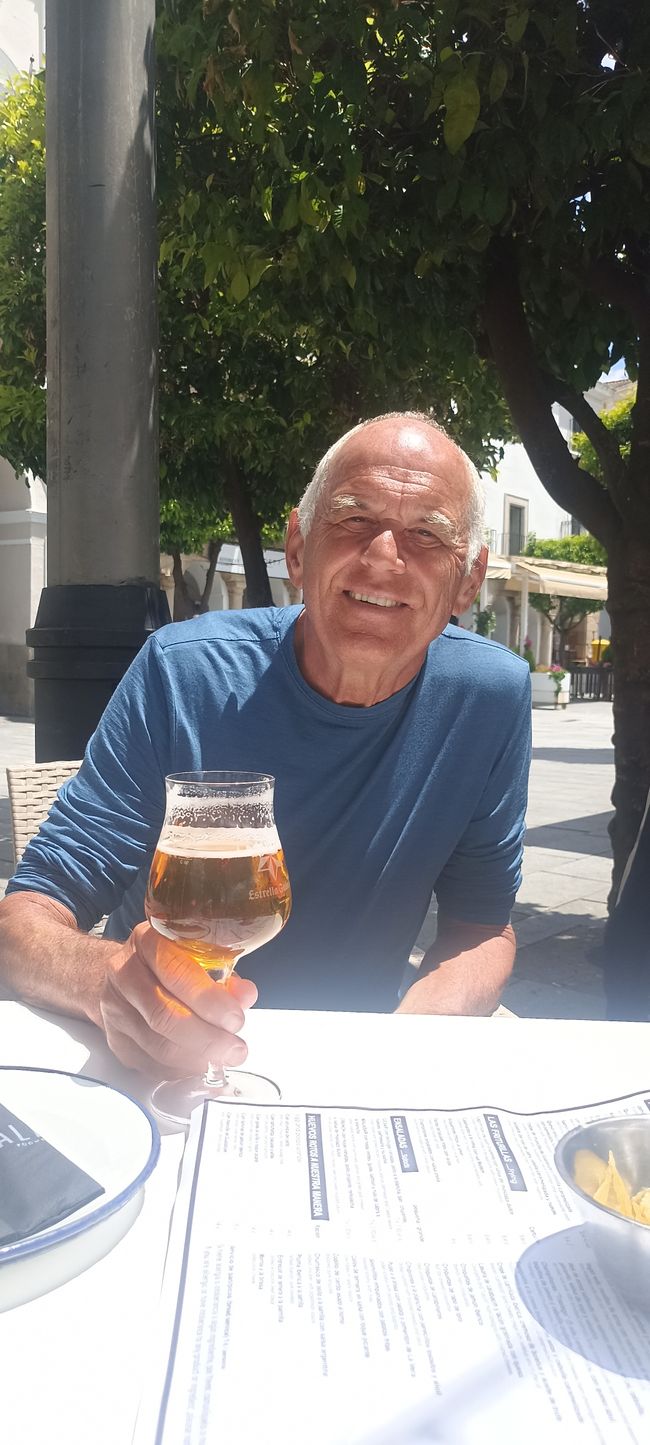
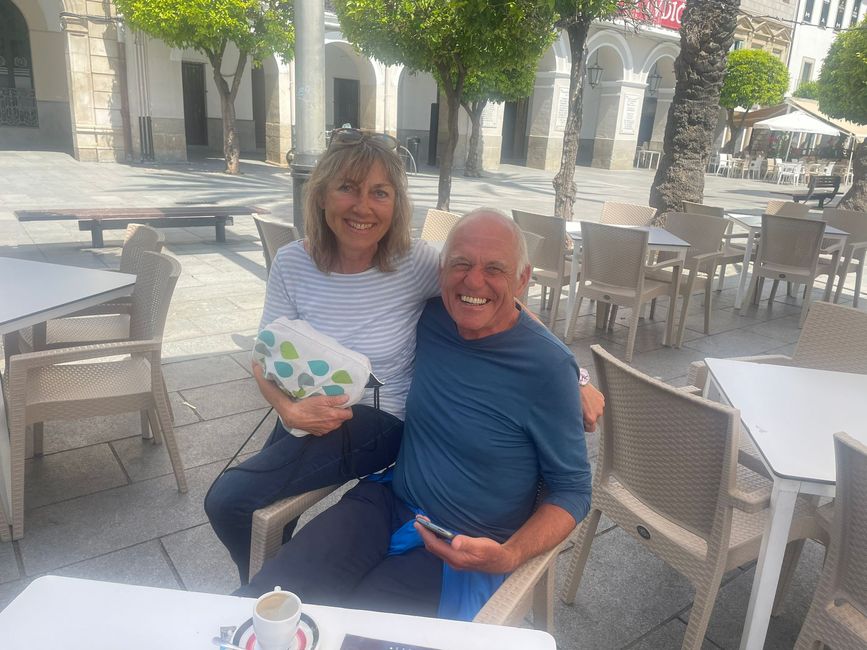
Բաժանորդագրվել տեղեկագրին
EV Cycling Day 11 (17 May): Isla Cristina - Valverde del Camino - Minas de Riotinto 105 km
In the morning, Dominique notices that the lowrider's mount has come loose on the bumpy gravel roads. After a quick phone call to VeloGellert in Basel, we re-tighten the clamps, but after 20 km the problem reoccurs. We make it to Gibraleon, where a mechanic with the right tools and expertise re-adjusts almost everything for us. But unfortunately only on one side, which will lead to more problems the next day. But, first things first!
Today's route takes us from the sea to the hills of the copper ore mining area, Riotinto. We drive most of the way on the hard shoulder of the N 431 in heavy traffic. We are compensated for this by 25 km of good road, the Via Verde Molinos del Agua, which is reserved for cyclists and hikers and is part of the EV 1 in Spain. Beautiful! It's like a dream what nature has to offer here: a variety of plants, blooming and fragrant flowers. After a restful break in Valverde del Camino we come across the N 435 and a lot of traffic. The constant changes between tough climbs and descents drain our last strength. After 20 km we finally come to the descent to Riotinto, but we have to give it our all again for 5 km until we see the large hospital of Minas de Riotinto. It also represents the long history of mining in Riotinto and therefore seems oversized. Since 1875, the English have mined copper ore on a large scale and transported it to Huelva on the newly built railway line. Today we cycled 25 km along the old route. In 2001, the last mine was closed, but due to the increased prices of raw materials, the mine has been active again since 2016. Our friend Agustin also points out to us that Riotinto is the origin of the Spanish workers' movement. The miners were always very combative and had the toughest strikes. At a protest rally in 1888, the owners had 100 civilians shot by Spanish soldiers.
Riotinto is also considered the cradle of Spanish football. Football was first played in Spain in Minas de Riotinto, introduced by the English who settled there after taking over the mine in 1873. The English were looking for distraction and variety after work in a village that had no leisure activities to offer, and so they began to revive the game of football, which was popular in their homeland. The locals were amazed at this strange pastime of kicking a ball between two posts guarded by a so-called "goalkeeper" - and horrified mothers forbade the village's daughters from watching this spectacle, which was played out in shorts. Football enthusiasm grew so much over time that by the 1920s there were more than 20 football teams and clubs.
EV Cycling Day 12 (18 May): Riotinto - Aracena - Segura de Leon 70 km
We ride through a lonely area - we are accompanied by thousands of olive trees, a few herds of cattle and a few reservoirs, which are important for the supply of drinking water and the irrigation of the plantations in the south. And we have to overcome a lot of altitude, a total of 1300 meters. Dominique tackles this in the style of a Vuelta cyclist, I am panting behind as a hobby cyclist. But we both manage to arrive in Segura in a great mood. This is also due to the beautiful landscape, we enjoy the vastness and the solitude. There is still a lot of traffic on the first 30 km, people seem to be on their way to the Whitsun weekend. Dominique's lowrider is causing problems again, the bags are obviously not properly secured. We take a break in the beautiful village of Aracena and fortify ourselves for the onward journey. After shopping in the supermarket, we check the front bags again and notice that a nut is missing from the lowrider's suspension. Luckily we have now decided on this - it could have had fatal consequences on the road - and luckily there is a Ferrateria around the corner. So we can fix the problem pretty quickly.
After Aracena we lose around 300 meters of the hard-earned altitude, the normal fate of cyclists! In a small village further up again we take another break before the last 400 meters of altitude. Before that we have to adjust the lowrider again. Thanks to Harald's tools we can now fix the whole thing even more firmly and better. Now I, Dominique, am fit to ride again. The last climbs and kilometers are still a real challenge for us and we are happy to have finally managed the 1400 meters of altitude. Segura lies in a valley, wonderful to look at with the white houses and the castle. Luckily there is a hotel here and we are still prepared dinner despite the kitchen being closed.
EV Cycling Day 13 (19 May): Segura - Merida 125 km
We had heard so much about Extremadura beforehand. Lonely, hot, mountainous, remote... You might think that it could be translated as extremely hard, but in fact it means 'beyond the Duero'. We were able to quickly confirm some of the prejudices: the region is remote, on the northwestern edge of Spain, and only a few people live there. We found it beautiful and interesting, driving up and down the hilly landscape, past countless olive trees, the occasional horse, sheep and cow herd. There are also holm oak and cork oak groves, which are home to the black Iberian pig (cerdo iberico), which feeds mainly on acorns. After 30 km we come to the next larger town, but everything is closed on this Whitsun Sunday. We meet a Dutchman who has been on the road since Good Friday, so he is meeting his wife in Seville, who is coming by car. He and her drive to Gibraltar, then they get the car, which also solves the problem of transporting the bikes home. The Dutch are obviously quite inventive in this regard - a little later we meet a couple who can take the bikes to Pau in a special bus. Bas, whom we meet the next day in Merida, has obviously also traveled with this organization. He has set himself the goal of visiting as many European capitals as possible by bike. He is on his way to Lisbon, where a Dutch bus company will transport his bike back home.
Since there is nothing to be had in Fuento de Cantos, we have to cycle another 25 km to Zafra. We realise that the Spanish breakfast is not enough for the exertion and arrive in Zafra with a hunger pang. After that we soon get back onto the N 630, but there is hardly any traffic. We make good progress, but the urgently needed break in Almendralejo unfortunately has to be cancelled due to a lack of options. It is not until 15 km before Mérida that we find a café and we are very happy about it. We reach Mérida via the Roman bridge.
Monday, 20 May: Mérida (rest day)
It is worth it for us to take a day off in the capital of Extremadura. On the one hand, our legs can rest, and on the other hand, Mérida was the capital of the province of Lusitania during the Roman Empire and still has some impressive buildings from that time. The large amphitheater, right next door the Roman Theater, an impressive excavation of a Roman house with its floor mosaics, the Arco de Trajano and the Temple of Diana are worth mentioning. Also very impressive is the Alcazaba next to the Roman bridge, a Muslim fortification from the 9th century, and the Basilica of Santa Eulalia. Our day is well filled.
Բաժանորդագրվել տեղեկագրին
Պատասխանել (3)
Anke & Steffen
Bom Dia, Boenos tardes und Moin ihr Lieben,
voller Freude, Neugier, Staunen und Bewunderung haben wir Eure Berichte bisher verfolgt. Tolle Leistung, ihr seid unsere Helden :-)
Vielen Dank für die sehr eindrückliche Schilderung der Strecken, eurer Empfindungen und Gedanken sowie die schönen Bilder.
Ab dem 09. waren auch wir auf den Sätteln von Kassel nach Cuxhaven.
Nicht so lange Etappen und deutlich weniger hm.
Als wir am Abend des 16.05. Euren Bericht vom 14.05. lasen, mussten wir an Eure Iron-Curtain-Trail Tour Teil 2 denken, als wir uns um 1 Tag in Lübeck verpasst hatten.
So war es auch diesmal, wenn auch nur thematisch. Am Abend nach dem Check-in wollten wir nicht mehr weit laufen. So hatte Anke bei der Anfahrt zum Hotel ein Portugiesisches Restaurant gesehen, und meinte das läge am Nähesten. Nicht lange überlegt und hin. Der Name des Restaurants, "Sagres", gutes Essen, hilfsbereites portugiesisches Personal (Familie) und ein Pärchen am Nachbartisch, die Portugal lieben und uns die Story mit der "letzten Bratwurst vor Amerika" in Sagres erzählen. Wir waren Euch also wieder ganz nah.
Ansonsten sind wir wohlauf und hoffen das gleiche von Euch. Genießt weiterhin die Tour. Wir freuen uns auf weitere spannende Berichte.
Seid lieb gegrüßt von
Anke & Steffen
Sie tun es wirklich gut … kuche auf die Karte ihre Etappen . Schone Bilder . Bin neidisch 😂😂 Grüße von Dirk und Ariane aus Belgiën
Harald
Danke! Es ist immer wieder erstaunlich, durch welche Landschaften wir fahren! 